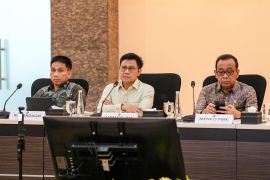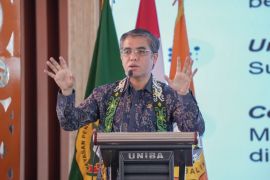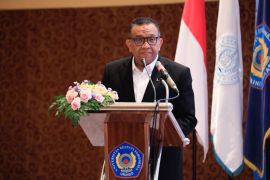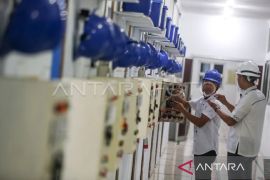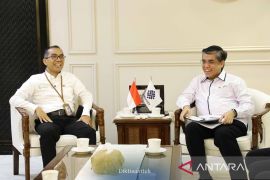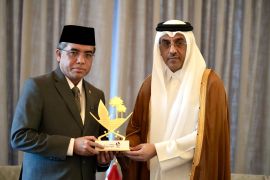The percentage of new higher education alumni is only about 10-12 percent of the 138 million members of the workforce in 2020.Jakarta (ANTARA) - Vice President Ma'ruf Amin affirmed that Indonesia had a major task to complete in terms of increasing the number of human resources to constitute more higher education graduates.
"High school alumni still constitute a major chunk of the current workforce at around 32 percent," Amin stated while delivering a scientific oration at the Syaichona Moh Cholil Islamic College (STAI) in Bangkalan District, East Java Province, on Thursday.
In a statement from the Press, Media, and Information Bureau (BPMI) of the Vice President's Secretariat, Amin noted that the number of higher education graduates in the workforce only reached around 10-12 percent.
"The percentage of new higher education alumni is only about 10-12 percent of the 138 million members of the workforce in 2020," the vice president stated.
Although the number of higher education graduates in the workforce is small, Amin noted that the number of higher education alumni -- ranging from the undergraduate to doctoral levels -- had increased.
Related news: Manpower minister launches regional-based workforce expansion model
According to the National Workforce Survey conducted by Statistics Indonesia (BPS) in 2021, the percentage of Indonesia's population that had completed higher educational studies -- both undergraduate to postgraduate studies -- had increased by 2.2 percent as compared to 2011.
Hence, Amin encouraged all higher education graduates, especially from STAI Syaichona Moh Cholil Bangkalan, to make the most of their knowledge and skills at the workplace, so they can increase the number of highly educated people in the workforce.
"I congratulate all graduates. You should be grateful for your achievement. You will start a new chapter in your life soon to dedicate your knowledge for our society, nation, and country," he affirmed.
The BPS’ National Workforce Survey aims to decipher job opportunities and their relation to education, number of work hours, and employment sector; unemployment and underemployment; as well as the number of non-workforce population, such as students and housewives.
Related news: Indonesia`s workforce to decline by 2040: World Bank
Related news: Small, medium-scale industry absorbs 60% of total industrial workforce
Translator: Fransiska Ninditya, Uyu Liman
Editor: Suharto
Copyright © ANTARA 2022



